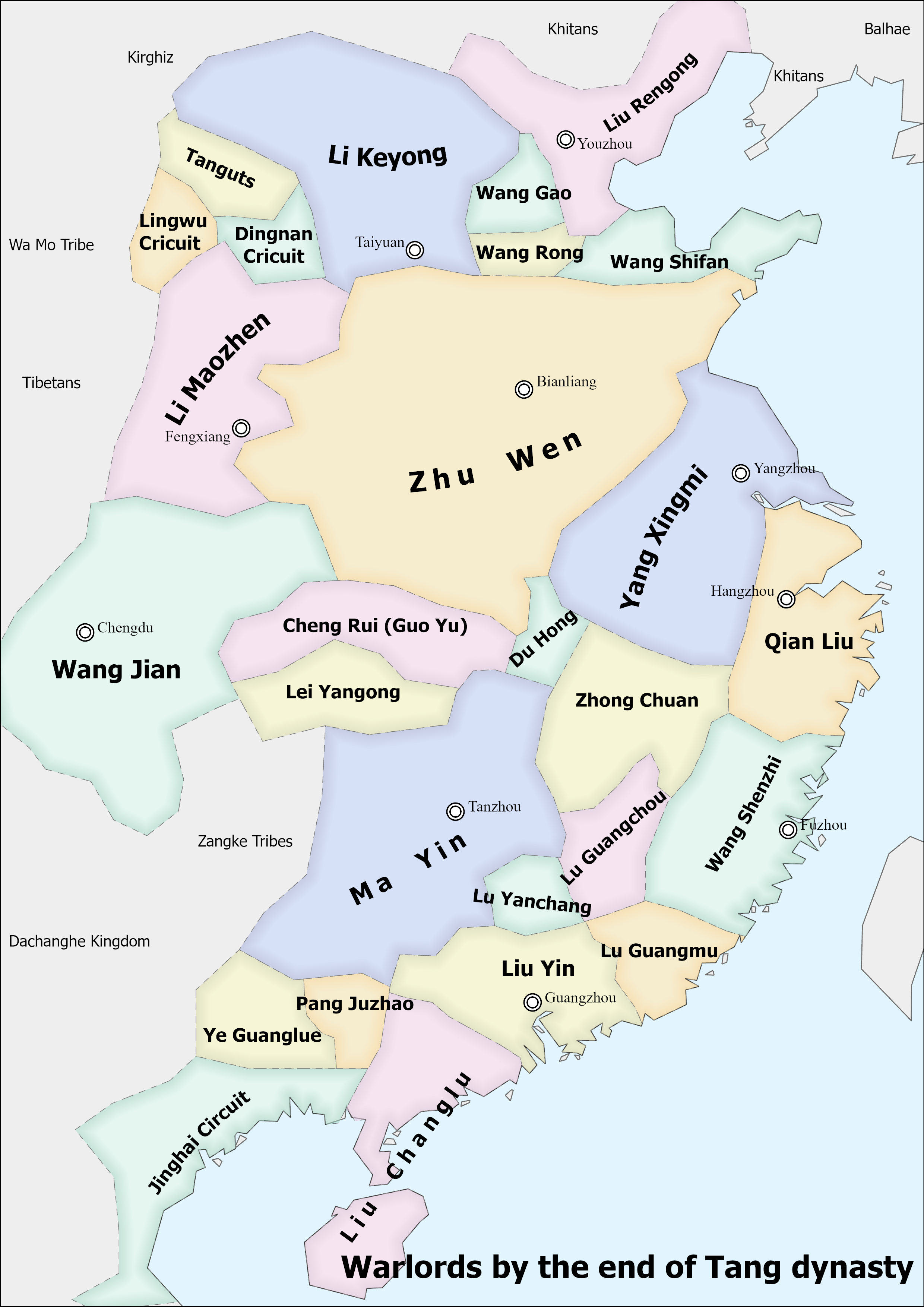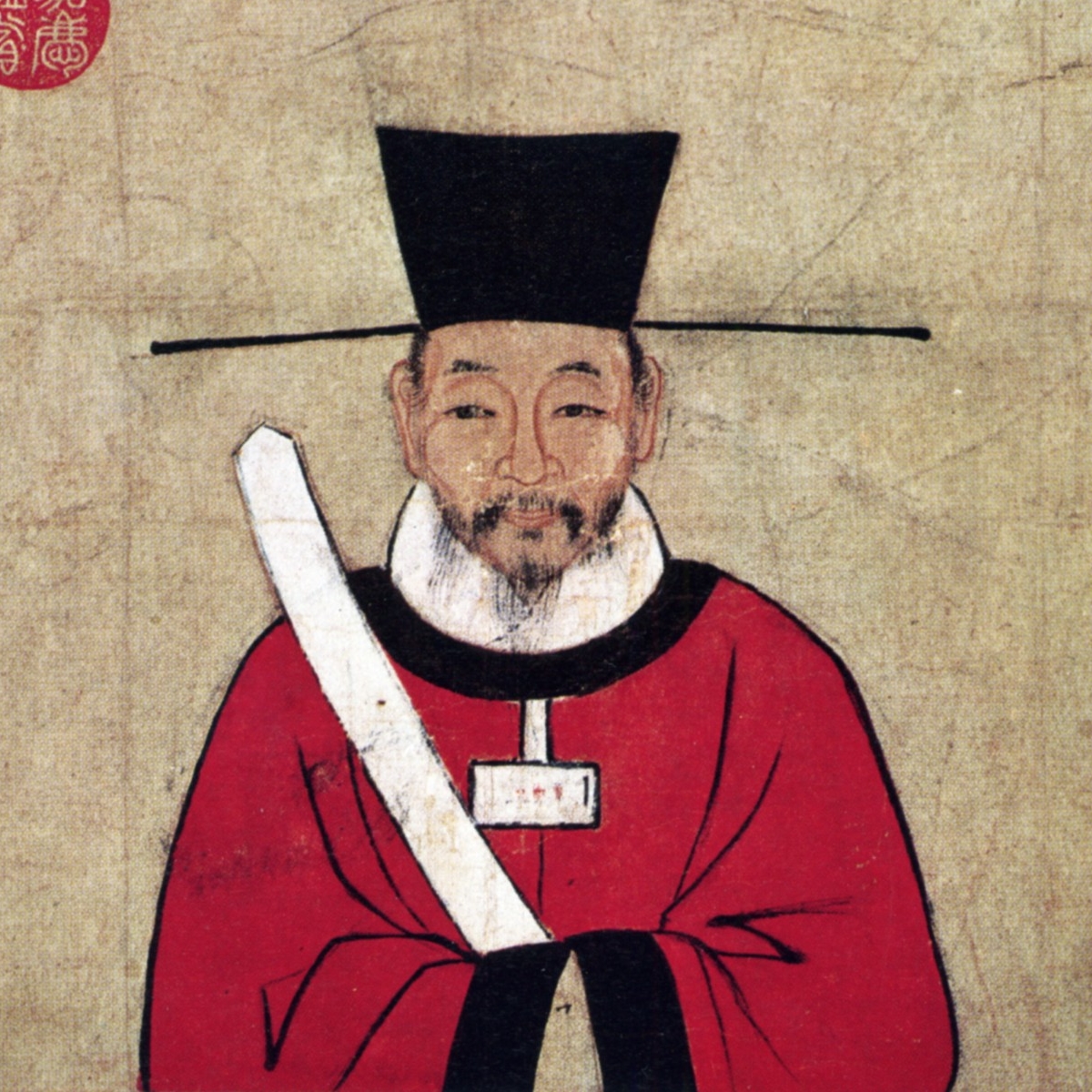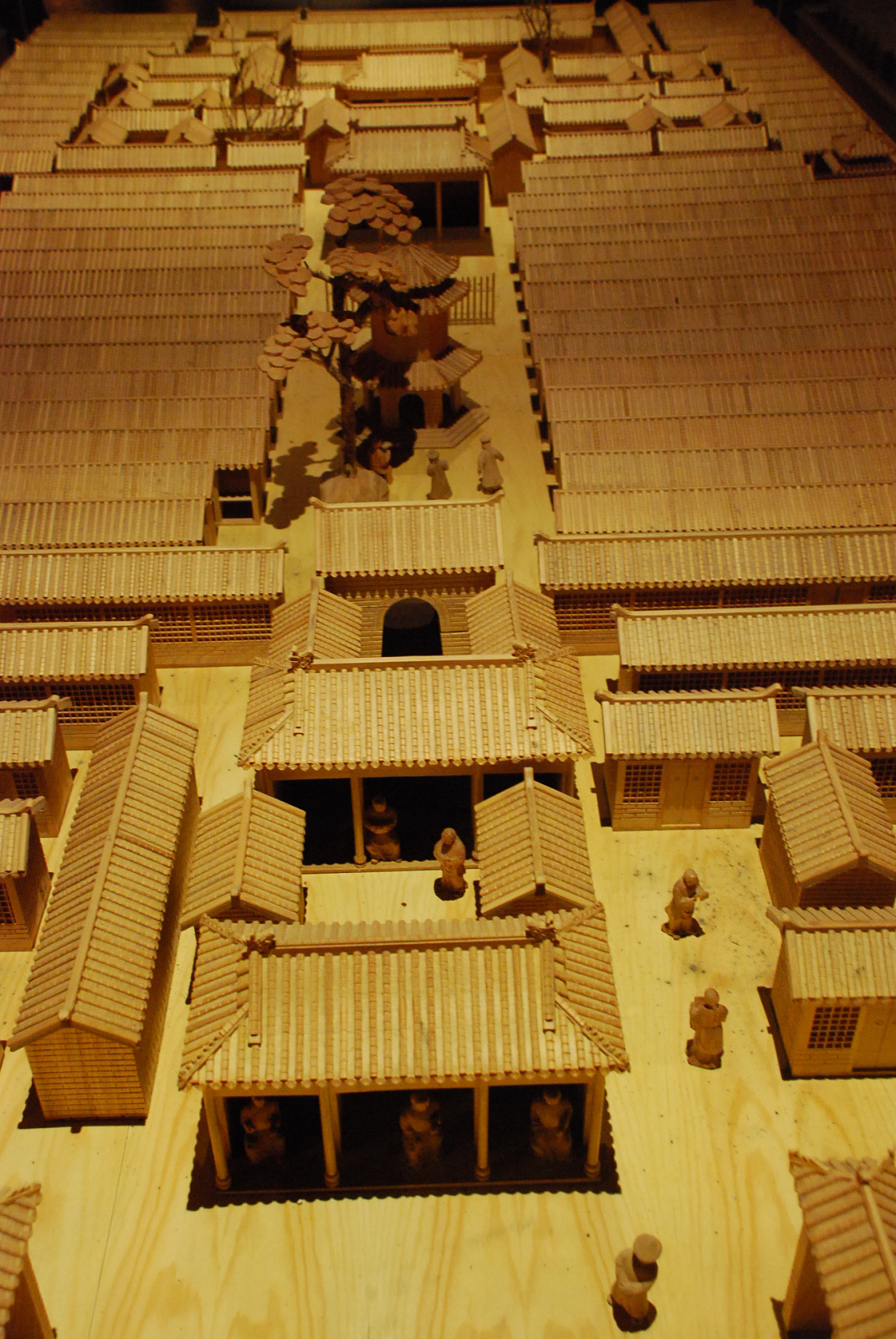|
Xu Yanruo
Xu Yanruo (徐彥若) (died 901), courtesy name Yuzhi (俞之), formally the Duke of Qi (齊公), was an official of the Chinese Tang dynasty, serving as a chancellor during the reign of Emperor Zhaozong. Background and early career It is not known when Xu Yanruo was born. He was a sixth-generation descendant of Xu Yougong (徐有功), a famed judge during the reign of Wu Zetian.''New Book of Tang'', vol. 113. His family claimed to be originally descended from mythical Xia dynasty judge Gao Yao and traced its ancestry through a line of officials of Qin dynasty, Han dynasty, Cao Wei, Jin dynasty (266–420), Liu Song, Southern Qi, Liang dynasty, Chen dynasty, and Tang dynasty. His grandfather Xu Zai (徐宰) served as a judge at the supreme court (大理寺, ''Dali Si''), and his father Xu Shang was a chancellor during the reign of Emperor Yizong. Xu Yanruo had at least four younger brothers, Xu Rensi (徐仁嗣), Xu Renju (徐仁矩), Xu Renfan (徐仁範), and Xu Renxu ... [...More Info...] [...Related Items...] OR: [Wikipedia] [Google] [Baidu] |
Xu (surname 徐)
Xu () is a Chinese surname, Chinese-language surname. In the Wade-Giles system of Romanization of Chinese, romanization, it is spelled as "Hsu", which is commonly used in Taiwan or overseas Chinese communities. It is different from Xu (surname 許), represented by a different character. Variations in other Chinese varieties and languages In Wu Chinese including Shanghainese, the surname is transcribed as Zee, as seen in the historical place name Zikawei in Shanghai (Xujiahui in Pinyin). In Gan Chinese, it can be spelled Hi or Hé. In Cantonese, is often transcribed as Tsui, T'sui, Choi, Chooi, Chui or even Tsua. In modern Vietnamese language, Vietnamese, the character is written Từ and Sy when migrating to the English-speaking World, particularly the United States. Other spellings include Hee and Hu. In Japanese language, Japanese, the surname is transliterated as Omomuro (kunyomi) or Jo (onyomi or Sino-Japanese). In Korean, is romanized as Seo in the Revised Romanizati ... [...More Info...] [...Related Items...] OR: [Wikipedia] [Google] [Baidu] |
Liang Dynasty
The Liang dynasty (), alternatively known as the Southern Liang () or Xiao Liang () in historiography, was an imperial dynasty of China and the third of the four Southern dynasties during the Northern and Southern dynasties period. It was preceded by the Southern Qi dynasty and succeeded by the Chen dynasty. The rump state of Western Liang existed until it was conquered in 587 by the Sui dynasty. Rule During the Liang dynasty, in 547 a Persian embassy paid tribute to the Liang, amber was recorded as originating from Persia by the '' Book of Liang''. In 548, the Prince of Henan Hou Jing started a rebellion with Xiao Zhengde, the Prince of Linhe, nephew and a former heir of the Emperor Wu of Liang, and installed Xiao Zhengde as emperor. In 549, Hou sacked Jiankang, deposed and killed Xiao Zhengde, seized power and put Emperor Wu effectively under house arrest. He dismissed the armies opposed to him in the name of Emperor Wu. In 549, Emperor Wu died; Emperor Wu's third ... [...More Info...] [...Related Items...] OR: [Wikipedia] [Google] [Baidu] |
Zhang Jun (Tang Chancellor)
Zhang Jun (張濬) (died January 20, 904Academia Sinicabr>Chinese-Western Calendar Converter''Zizhi Tongjian'', vol. 264.), courtesy name Yuchuan (禹川), was an official of the Chinese dynasty Tang dynasty, serving as a chancellor during the reigns of Emperor Xizong and Emperor Xizong's younger brother and successor Emperor Zhaozong. Early in Emperor Zhaozong's reign, Zhang was a major advocate for the imperial campaign to regain power from the regional warlords, but was removed after commanding a disastrous campaign against warlord Li Keyong and forced into retirement. Late in Emperor Zhaozong's reign, with Emperor Zhaozong physically controlled by another warlord, Zhu Quanzhong, who had designs on taking over the throne as emperor (and eventually did, founding Later Liang), Zhu, while formerly an ally of Zhang's, was concerned that Zhang would encourage other warlords into a coordinated campaign against Zhu to stop his takeover, and so had his ally Zhang Quanyi slaughter ... [...More Info...] [...Related Items...] OR: [Wikipedia] [Google] [Baidu] |
Shanxi
Shanxi; Chinese postal romanization, formerly romanised as Shansi is a Provinces of China, province in North China. Its capital and largest city of the province is Taiyuan, while its next most populated prefecture-level cities are Changzhi and Datong. Its one-character abbreviation is (), after the Jin (Chinese state), state of Jin that existed there during the Spring and Autumn period (). The name ''Shanxi'' means 'west of the mountains', a reference to its location west of the Taihang Mountains. Shanxi borders Hebei to the east, Henan to the south, Shaanxi to the west and Inner Mongolia to the north. Shanxi's terrain is characterised by a plateau bounded partly by mountain ranges. Shanxi's culture is largely dominated by the ethnic Han Chinese, Han majority, who make up over 99% of its population. Jin Chinese is considered by some linguists to be a distinct language from Mandarin and its geographical range covers most of Shanxi. Both Jin and Mandarin are spoken in Shanxi. ... [...More Info...] [...Related Items...] OR: [Wikipedia] [Google] [Baidu] |
Taiyuan
Taiyuan; Mandarin pronunciation: (Jin Chinese, Taiyuan Jin: /tʰai˦˥ ye˩˩/) is the capital of Shanxi, China. Taiyuan is the political, economic, cultural and international exchange center of Shanxi Province. It is an industrial base focusing on energy and heavy chemicals. Throughout its long history, Taiyuan was the capital or provisional capital of many dynasties in China, hence the name ( zh, s=龙城, p=Dragon City, labels=no). As of 2021, the city governs 6 districts, 3 counties, and hosts a county-level city with a total area of 6,988 square kilometers and a permanent population of 5,390,957. Taiyuan is located roughly in the centre of Shanxi, with the Fen River flowing through the central city. Etymology and names The two Chinese characters of the city's name are (, "great") and (, "plain"), referring to the location where the Fen River leaves the mountains and enters a relatively flat plain. Throughout its long history, the city had various names, including ... [...More Info...] [...Related Items...] OR: [Wikipedia] [Google] [Baidu] |
Li Keyong
Li Keyong ( zh , c = 李克用 , p = Lǐ Kèyòng ) (October 24, 856 – February 24, 908) was a Chinese military general and politician of Shatuo ethnicity, and from January 896 the Prince of Jin ( zh, t=晉王, p=Jìn Wáng), which would become an independent state after the fall of the Tang dynasty in 907. Li served as a ''Jiedushi'' provincial military governor during the late Tang period and was an instrumental figure in the development of a Shatuo base of power in what is today's Shanxi Province of China. His son Li Cunxu (Emperor Zhuangzong), a child of his concubine Lady Cao, would succeed him as Prince of Jin and eventually become the founding emperor of the Later Tang dynasty in 923. Background Li Keyong—although he would have initially carried the surname of Zhuye—was born in 856, during the reign of Emperor Xuānzong. His father was the Shatuo chieftain Zhuye Chixin, whose people were then living in the Shenwu River (神武川, flowing through modern Shu ... [...More Info...] [...Related Items...] OR: [Wikipedia] [Google] [Baidu] |
Zizhi Tongjian
The ''Zizhi Tongjian'' (1084) is a chronicle published during the Northern Song dynasty (960–1127) that provides a record of Chinese history from 403 BC to 959 AD, covering 16 dynasties and spanning almost 1400 years. The main text is arranged into 294 scrolls (), each equivalent to a chapter—totaling around 3 million Chinese characters. In 1065, Emperor Yingzong of Song commissioned his official, Sima Guang (1019–1086), to lead a project to compile a Universal history (genre), universal history of China, and granted him funding and the authority to appoint his own staff. His team took 19 years to complete the work and in 1084 it was presented to Emperor Yingzong's successor Emperor Shenzong of Song. It was well-received and has proved to be immensely influential among both scholars and the general public. Endymion Wilkinson regards it as reference quality: "It had an enormous influence on later Chinese historical writing, either directly or through its many a ... [...More Info...] [...Related Items...] OR: [Wikipedia] [Google] [Baidu] |
Old Book Of Tang
The ''Old Book of Tang'', or simply the ''Book of Tang'', is the first classic historical work about the Tang dynasty, comprising 200 chapters, and is one of the Twenty-Four Histories. Originally compiled during the Five Dynasties and Ten Kingdoms period (10th century AD), it was superseded by the ''New Book of Tang'', which was compiled in the Song dynasty, but later regained acceptance. The credited editor was chief minister Liu Xu, but the bulk (if not all) of the editing work was actually completed by his predecessor Zhao Ying. The authors include Zhang Zhao (Five Dynasties), Zhang Zhao, Jia Wei (), and Zhao Xi ().Zhao YiCh. 16 "Old and New Books of Tang" () ''Notes on Twenty-two Histories'' ( ). Structure The ''Old Book of Tang'' comprises 200 volumes. Volumes 1–20 contain the annals of the Tang emperors. Twitchett notes that coverage over time in the annals is most dense during the early and middle Tang, including only very sparse information in the late Tang after 84 ... [...More Info...] [...Related Items...] OR: [Wikipedia] [Google] [Baidu] |
Emperor Xizong Of Tang
Emperor Xizong of Tang (June 8, 862 – April 20, 888), né Li Yan, later name changed to Li Xuan (, changed 873), was an emperor of China's Tang dynasty. He reigned from 873 to 888. He was the fifth son of his predecessor Emperor Yizong and was the elder brother of his successor Emperor Zhaozong. His reign saw his realm overrun by the great agrarian rebellions led by Wang Xianzhi and Huang Chao, and while both were eventually defeated, by the end of Emperor Xizong's reign, the Tang state had virtually disintegrated into pieces ruled by individual warlords, rather than the imperial government, and would never recover, falling eventually in 907. Background and accession Li Yan was born on June 8, 862, at the eastern palace in the Tang imperial capital Chang'an, as the fifth son of then-reigning Emperor Yizong. His mother was Emperor Yizong's concubine Consort Wang, who carried the title of ''Guifei'', the highest rank carried by imperial consorts.'' New Book of Tang'', v ... [...More Info...] [...Related Items...] OR: [Wikipedia] [Google] [Baidu] |
Imperial Examination
The imperial examination was a civil service examination system in History of China#Imperial China, Imperial China administered for the purpose of selecting candidates for the Civil service#China, state bureaucracy. The concept of choosing bureaucrats by merit rather than by birth started Imperial examination in Chinese mythology, early in Chinese history, but using written examinations as a tool of selection started in earnest during the Sui dynasty (581–618), then into the Tang dynasty (618–907). The system became dominant during the Song dynasty (960–1279) and lasted for almost a millennium until its abolition during the late Qing reforms, late Qing dynasty reforms in 1905. The key sponsors for abolition were Yuan Shikai, Yin Chang and Zhang Zhidong. Aspects of the imperial examination still exist for entry into the civil service of both China and Taiwan. The exams served to ensure a common knowledge of writing, Chinese classics, and literary style among state officials. ... [...More Info...] [...Related Items...] OR: [Wikipedia] [Google] [Baidu] |




